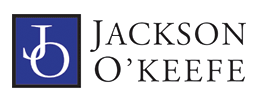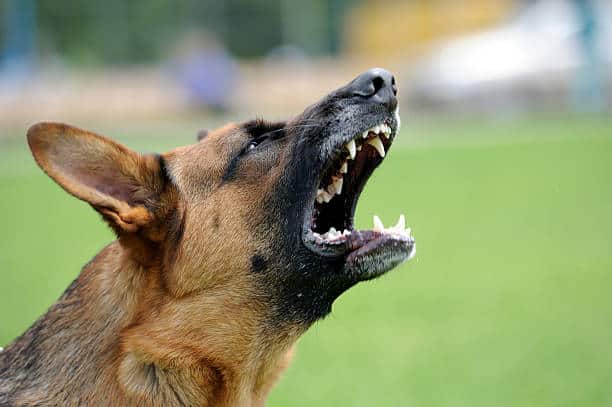The defendant, Mancini Realty, LLC, sought coverage under its policy with the plaintiff, Diamond State…
DOG INJURY LAW: Connecticut Appellate Court addresses alleged rabid dog

In a ruling release April 24, 2012 the Connecticut Appellate Court stated in part:
SHELDON, J. This case involves a dispute between a homeowner and her children’s babysitter concerning an incident in which the babysitter, while caring for the children, claimed that she was potentially exposed to the rabies virus due to her contact with the homeowner’s dogs after she found them in the vicinity of a rabid raccoon in the homeowner’s yard. The plaintiff, Emma Atkinson, brought this action against the defendant, Lorraine Santore, under General Statutes § 22-357, 1 commonly known as the dog bite statute, claiming that the defendant was strictly liable for such potential exposure and its consequences, including the cost of and the pain associated with the resulting administration to her of antirabies injections. Both the plaintiff and the defendant subsequently filed motions for summary judgment. In her motion, the defendant claimed that she could not be held liable under § 22-357 because her dogs had not ‘‘do[ne] any damage’’ to the plaintiff, within the meaning of the statute.
***
On appeal, the plaintiff claims error in the court’s granting of the defendant’s motion for summary judgment on two grounds. First, she argues that the court’s analysis of the statute’s requirements is too restrictive because it inappropriately limits dog owners’ strict liability thereunder to damage resulting from the active or affirmative conduct of their dogs. Second, she argues that even if the court’s statutory analysis is correct, there is, on this record, a genuine issue of material fact as to whether her potential exposure to the rabies virus resulted from the defendant’s dogs’ active or affirmative conduct towards the rabid raccoon. For the following reasons, we disagree and thus affirm the judgment of the trial court.
Although the language of the statute contains no express requirement that a dog’s conduct be active or affirmative in order for its owner to be held strictly liable for damage resulting from it, our courts have long held that the statute applies only to a dog’s volitional conduct that is either vicious or mischievous rather than innocent or involuntary. See Granniss v. Weber, supra, 107 Conn. 630. This limitation is rooted in the purpose of the statute, which is to assign full responsibility for the special dangers arising from the natural behavior of dogs to those who expose others to such special dangers by owning or keeping dogs, rather than to innocent persons who encounter such dogs and thereby suffer damage to their persons or property. At common law before 1798, 4 dogs were regarded as a base or inferior form of inherently dangerous property, which owners kept and maintained at their peril. See Woolf v. Chalker, 31 Conn. 121, 127, 133 (1862). The low status of dogs compared to other domesticated animals was based on their nonutility as a food source, their proneness to contracting and spreading the deadly rabies virus, and their natural tendency to engage in vicious behavior, particularly biting, and mischievous behavior, typically involving the destruction of property. Id., 127-28. In light of the latterfactor, in particular, the legislature sought to impose strict liability for all damage predictably resulting from dogs’ vicious or mischievous behavior on those who, by owning or keeping them, expose others to the dangers of such aggressive behavior while seeking its benefits for their own selfprotection. Id., 132.
Consistent with this purpose, the Granniss court described the scope of dog owners’ and keepers’ liability under the statute as including all damage caused by the vicious or mischievous conduct of their dogs but excluding all damage caused by the dogs’ innocent or involuntary conduct. Granniss v. Weber, supra, 107 Conn. 630. Strict liability appropriately is imposed on dog owners and keepers for damage caused by the volitional and vicious or mischievous conduct of their dogs because it is reasonably foreseeable that dogs as a species will engage in such inherently dangerous behavior. 5 Strict liability is not imposed, by contrast, for damage caused by the involuntary or innocent behavior of dogs because no special risk of harm foreseeably arises from such passive, nonaggressive behav-ior. In sum, consistent with Granniss and the numerous Superior Court decisions that have followed it, 6 we agree with the trial court that strict liability under § 22- 357 does not extend to damage caused by a dog’s merely passive, and, thus, innocent or involuntary, behavior.
***
The plaintiff also claims that even if the court employed the proper legal analysis in evaluating the defendant’s statutory liability, summary judgment was improper on the facts here presented because there is a genuine issue of material fact as to whether the plaintiff’s potential exposure to rabies resulted from the defendant’s dogs’ affirmative conduct. We disagree.
***
In her complaint, the plaintiff initially claimed that the dogs were ‘‘enjoined’’ with the raccoon, suggesting that the dogs had made physical contact with the raccoon and grappled with it. Later, however, in the personal affidavit attached to her motion for summary judgment, the plaintiff averred more generally, without accompanying explanation, that the dogs ‘‘had contact’’ with the raccoon. When pressed on this point at oral argument before this court, the plaintiff’s counsel conceded that the plaintiff had not witnessed any physical contact between the dogs and the raccoon. Counsel contended, nonetheless, that such physical contact could be inferred. When asked how such an inference could be drawn fromthe evidence here presented, counsel responded that the dogs were found wandering around a portion of the defendant’s property that they typically did not enter, and, thus, they could have been ‘‘sniffing around or investigating’’ the raccoon. Counsel also speculated, without citing any supporting evidence, that the dogs could ‘‘have caused’’ the raccoon’s injuries.
‘‘Although the party seeking summary judgment has the burden of showing the nonexistence of any material fact . . . it [is] incumbent upon the party opposing summary judgment to establish a factual predicate from which it can be determined, as a matter of law, that a genuine issue of material fact exists.’’ (Citations omitted; internal quotation marks omitted.) Wadia Enterprises, Inc. v. Hirschfeld, supra, 224 Conn. 247. Demonstrating a genuine issue ofmaterial fact’‘requires a showing of evidentiary facts or substantial evidence outside the pleadings from which material facts alleged in the pleadings can be warrantably inferred.’’ (Internal quotation marks omitted.) Martinez v. Southington Metal Fabricating Co., 101 Conn. App. 796, 799, 924 A.2d 150, cert. denied, 284 Conn. 930, 934 A.2d 246 (2007). An inference that is based on speculation and is unsupported by the evidence is insufficient to raise a genuine issue of material fact.
The judgment is affirmed.
To view the ruling in its entirety see: http://www.jud.ct.gov/external/supapp/Cases/AROap/AP135/135AP313.pdf



